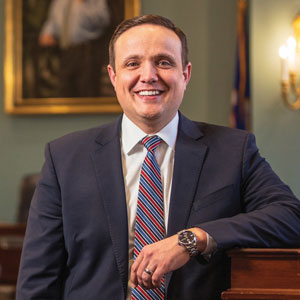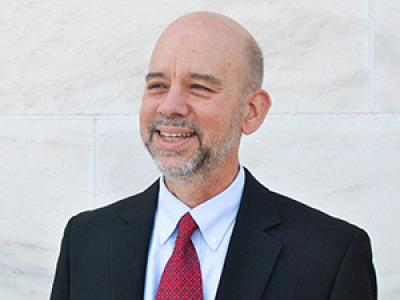The official new estimates for farm bill costs do little to ease the funding squeeze facing lawmakers who want to increase reference prices for major commodities to reflect the higher input costs farmers are paying.
At the same time, the latest Congressional Budget Office forecast raises new questions about the future of conservation funding provided through the Inflation Reduction Act.
CBO’s 10-year farm bill baseline is important to the next farm bill because the House and Senate Agriculture committees must keep their spending within the amounts forecast by CBO unless they can find funding from other sources.
In the case of commodity programs, CBO’s estimates of future commodity prices can make it more or less expensive to increase the reference prices that are used to trigger payments to growers under the Price Loss Coverage and Agriculture Risk Coverage program. The higher the estimates are, the less costly it is to raise reference prices.
In its new forecast, CBO raised the market price estimates for some commodities but not enough to make much impact on the cost of increasing reference prices in the farm bill. And in many years, the price estimates are actually lower.
 Bart Fischer, Texas A&M University
Bart Fischer, Texas A&M UniversityBart Fischer, an economist at Texas A&M University who had senior roles with the House Agriculture Committee during development of the 2014 and 2018 farm bills, said that “there is nothing earth-shattering in here (the CBO baseline) where suddenly it’s a lot cheaper to raise reference prices.”
CBO is now projecting that the price of soybeans will average $10.50 a bushel in 2024 and gradually decline to $10 a bushel in 2026 and $9.90 a bushel in 2027.
The average soybean price now forecast by CBO over the 10-year period works out to $10.01 a bushel, down from the $10.31 average that CBO forecast in 2022, according to an analysis by the American Farm Bureau Federation.
By comparison, USDA’s latest projections show soybean prices averaging somewhat higher than CBO is estimating throughout the decade. For example, USDA estimates the average price for the 2023 soybean crop will be $13 a bushel. USDA’s 2024 average is $11.40 a bushel. USDA never has the price dropping below $10.30 a bushel over the next 10 years.
CBO estimates corn prices will average $4.07 a bushel over the 10-year period, down from the $4.16 average price forecast in 2022, according to the Farm Bureau analysis. As with soybeans, USDA also is forecasting higher prices for corn than CBO is.
The bottom line is that the new CBO baseline does little to reduce the cost of raising reference prices, a priority issue for groups such as the American Soybean Association that argue the existing levels don't provide farmers with adequate risk protection.
Lawmakers will have to find a new source of funding or cut programs elsewhere in the farm bill to offset the cost of raising reference prices, said ASA economist Scott Gerlt.
Gerlt and Fischer both caution that the most recent CBO baseline may not be the final word: CBO could update its price forecast again before the farm bill is finalized, and it’s possible those numbers could be closer to USDA’s, potentially reducing the cost of modifying ARC or PLC.
There is no obvious source of funding inside or outside the farm bill for beefing up the commodity title. Some GOP lawmakers floated the idea last year of rescinding some pandemic assistance funding that USDA hasn’t spent yet, but it’s not clear how much would be available.
Corn dominates projected commodity spending
According to the Farm Bureau analysis, about $24.1 billion will be paid out to corn growers under the ARC and PLC programs from 2024 through 2033, while $5.8 billion would be paid on soybeans and $5.3 billion on wheat. Rice growers would receive nearly $4 billion, cotton growers an estimated $3.5 billion, and peanut producers $2.7 billion.
Don’t miss a beat! It’s easy to sign up for a FREE month of Agri-Pulse news! For the latest on what’s happening in Washington, D.C. and around the country in agriculture, just click here.
The Dairy Margin Coverage program is projected to provide $2.2 billion in payments over the period.
Conservation conundrum: CBO doesn’t think USDA can spend all that IRA funding
CBO analysts continue to doubt USDA’s ability to spend all the conservation funding it received under the Inflation Reduction Act. The problem for USDA is that IRA was passed under budget reconciliation rules that require all of the funding to be spent before fiscal 2032.
CBO estimates that USDA will only be able to spend about $15.3 billion of the $17.1 billion in new funding authorized by the IRA for four programs: the Environmental Quality Incentives Program, Conservation Stewardship Program, Regional Conservation Partnership Program and the Agricultural Conservation Easement Program.
 Ferd Hoefner
Ferd HoefnerCBO estimates that $806 million in funding allocated for RCPP and $730 earmarked for EQIP will go unspent along with $225 million in CSP funding.
CBO could be wrong about USDA’s ability to spend all that money before 2032, but Congress may not want to take that risk.
The IRA funding could be reallocated in a way that ensures the money gets out the door more quickly. There’s also the possibility that lawmakers could reallocate the conservation funding in such a way that it would permanently increase the future baseline for conservation programs.
Ferd Hoefner, a policy consultant who was the longtime policy director for the National Sustainable Agriculture Coalition, believes it’s important that Congress turn the funding into permanent baseline for future farm bills.
That would “greatly increase conservation funding over time, helping agriculture have a very fair shot at net zero emissions by 2050,” Hoefner said in an email to Agri-Pulse.
For more news, go to Agri-Pulse.com


